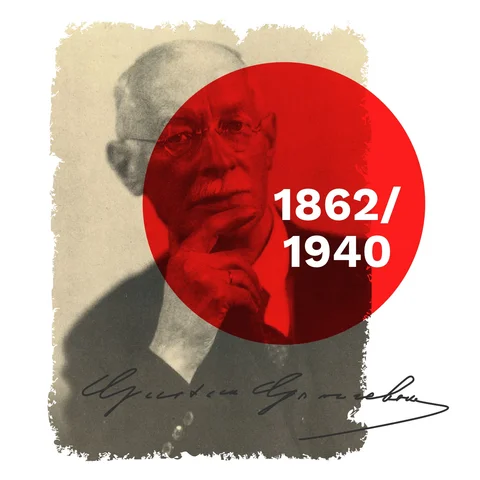
WHERE EXCITEMENT STARTED
THE LIFE STORY OF GUSTAV GENSCHOW
Behind every success story there is an innovative and spirited entrepreneur! Today, the GECO brand looks back over 130 years of expertise in the area of sport and hunting ammunition. During this time, a small dealership with the mindset of a start-up unerringly evolved into a world-famous brand. Guided at all times by its mission:
“Outstanding quality in the services of hunting and sport.”
Marking the 160th birthday of its founding father, we at GECO would like to honour the man who gave us our name and share with the world his moving life story and the history of the company he established.

25. May 1862
Our founder Karl Gustav Adolf Genschow entered the world in the eastern city of Stralsund on 25 May 1862, the seventh and youngest child to the merchant Julius Genschow and his wife Marie (née Gerth). The boy was just nine when he lost his father. But what was likely the most painful experience in his life did not prevent him from progressing from primary school to grammar school, where he consistently earned the respect of the teaching staff.
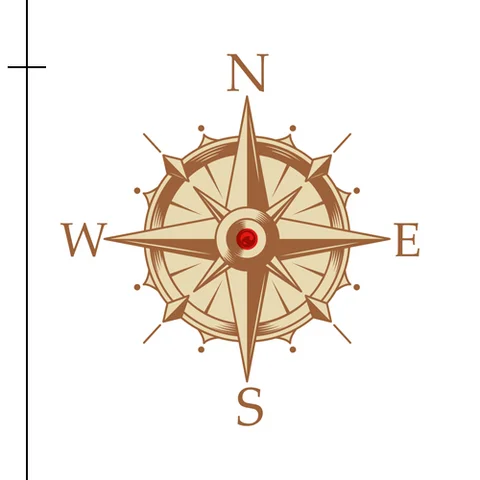
1880 - 1883
After graduating from school, he completed his one year of voluntary military service and then embarked on a commercial apprenticeship in the ironware and coal department at C.A. Beug Reederei, Getreidehandel, Kohlen-Import, Eisen-Engros. He completed the qualification at Easter 1882. After a variety of relevant positions in Stralsund and Berlin, he joined a company in Copenhagen in 1883 and was made company officer after only one year.

1885
His journey continued to Linden near Hannover in the winter of 1885, where he accepted a position at Zündhütchen- und Tonwarenfabrik – one of the oldest munitions factories in the German Empire at the time. This was the first occasion that the young man came into contact with the manufacture and sale of pyrotechnic products. It was likely the industry and the products that informed Genschow’s decision to become self-employed at the tender age of 25. He requested from his employer – and was granted – the exclusive right to sell the products in Berlin and in many other parts of the German Empire and the border zones.
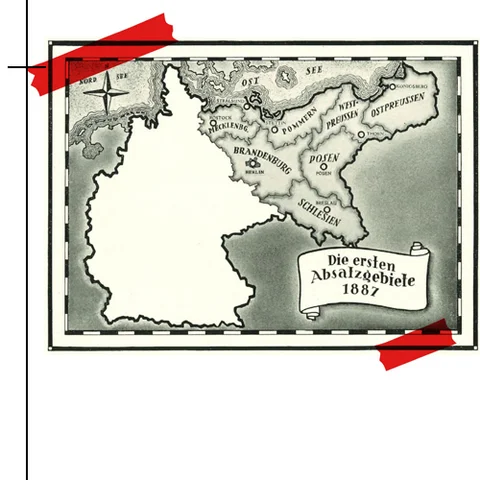
25. August 1887
The budding entrepreneur founded his company ‘Gustav Genschow’ on 25 August 1887. Besides ammunition, it also sold firearms for hunting and sports with the tag line ‘exclusively for dealers’ from day one. Its first entry in the company register dates from the same day. The young businessman set up his office on Schützenstraße 10 in Berlin. At the time, the location was in the direct vicinity of the Berliner Tagesblatt daily newspaper – its immediate neighbours today would be the Axel Springer publishing house and the Federal Ministry for the Environment and Nature Conservation. Another noteworthy fact: Germany’s largest private security service now operates from this address.

01. Januar 1889
The sole proprietor recruited additional manpower to cope with his company’s rapid growth. His brother-in-law Wilhelm Seebach became a partner in the business in autumn 1888. The dealership there became a general partnership under the registered name ‘Gustav Genschow und Compagnie’ (GECO) on 1 January 1889. Hunting equipment was added to the portfolio. The company also became general distributor for the popular ROTTWEIL cartridges. Growth continued, so the business moved to Charlottenstraße in Berlin just a year later.
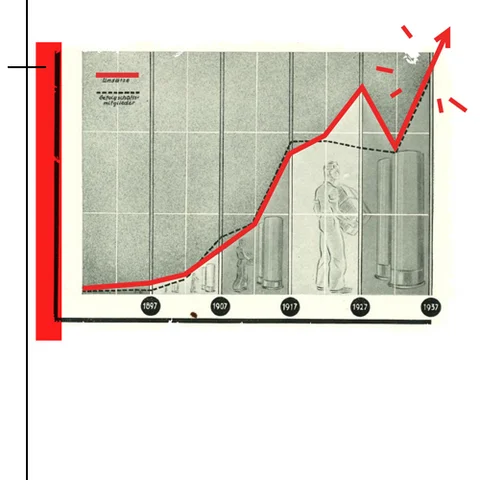
1899 - 1902
It was under this address that GECO really started to flourish, building on its strong position in the German and international firearms and ammunition trade. By 1902, the company’s assets had grown ten-fold in the first fifteen years of its existence. Revenues amounted to 840,000 marks, before the business went public. This was all the more remarkable, as it happened just a short time after the Panic of 1873. It was only natural then that the facilities, equipment, revenue and workforce grew from year to year. Fifty years later, the company was able to draw on reserves of over five million Reichsmark.
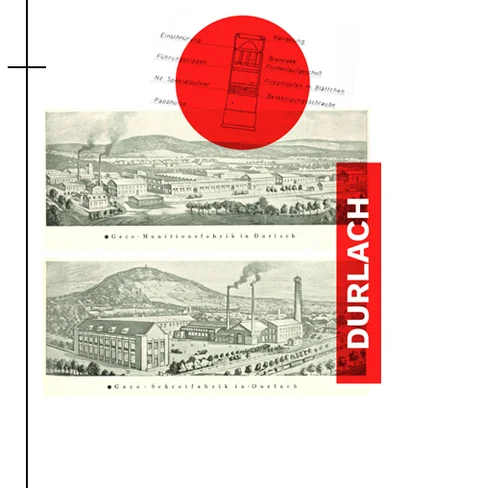
Genschow also bought a number of factories between 1899 and 1903. Among them was the Badische Schrot- und Gewehrpfropfenfabrik in 1899 or Durlacher Zündhütchen- und Patronenfabrik, which was added in 1903. The two companies were merged with Gustav Genschow & Co on 1 May 1906. These acquisitions enabled the company to join the ranks of ammunition and shot factories and become a well-known and relevant production site. Its significance for the German munitions supply grew rapidly, although it primarily manufactured peacetime ammunition: Flobert and revolver cartridges, rimfire cartridges, pistol cartridges, hunting cartridges, cardboard cases, brass cases, primers of all kinds, hunting shot and seals. The principal focus was placed on the needs of hunters and competitive shooters. Military ammunition was mainly produced for export markets.
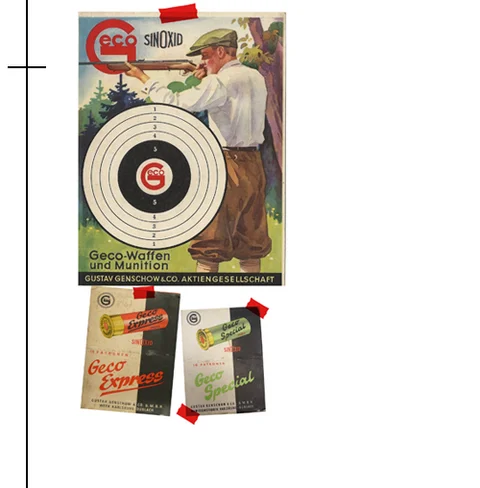
22. March 1907
The company went public on 22 March 1907, and the “GECO” headquarters moved to larger and more modern premises in Berlin. Expansion and modernisation remained firmly in the hands of the entrepreneur at all times. With the same priorities that apply today: “Expanding the portfolio and ensuring a varied programme” and always “Outstanding quality in the services of hunting and sport.” Many years of success, growth and international expansion followed. Among others, the company established sales subsidiaries in Berlin, Hamburg, Cologne and Vienna to cultivate more efficient distribution connections to the foreign markets (overseas, Balkans, Austria-Hungary).

28. January 1917
The ammunition factory, which had already made quite considerable deliveries of war ammunition abroad, placed itself entirely at the service of German national defence during the First World War. The wives and daughters of board members also worked at the machines in the factories. Facilities were expanded steadily to manufacture infantry and machine gun ammunition, along with pistol shells, mortar mines and rifle grenades etc. Wilhelm Seebach, co-founder of the company, succumbed to a heart attack at the age of 58 on 28 January 1917. It was probably the excessive exertions of working through the War that damaged the health of this “man of tireless creative joy” with such terminal effect. The outcome of the War and the death of the co-founder presented General Director Karl Gustav Genschow with new and at times controversial challenges.
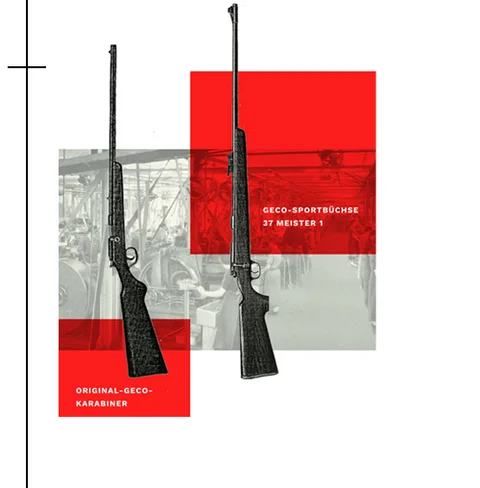
Post-War era
Despite all the difficulties of the post-War era, the shot factory developed into one of Germany’s most important facilities of this kind. The ammunition factory also regained its commercial equilibrium and enjoyed continuous success. Not only were the products from the two factories among Germany’s most pre-eminent brands, they were also appreciated in expert circles around the world thanks to adroit networking on the international markets. It would be fair to say: The success and global prestige of the GECO brand is already rooted in the company’s history.
Placed on the market as GECO carbines and GECO sporting rifles, the small-bore rifles quickly became popular due to their exemplary shooting performance and excellent value for money, as did the matching ammunition. This is aptly demonstrated by the numerous successes with GECO weapons in sport shooting, including European and World Championships.

1921
Despite all the difficulties of the post-War era, the shot factory developed into one of Germany’s most important facilities of this kind. The ammunition factory also regained its commercial equilibrium and enjoyed continuous success. Not only were the products from the two factories among Germany’s most pre-eminent brands, they were also appreciated in expert circles around the world thanks to adroit networking on the international markets. It would be fair to say: The success and global prestige of the GECO brand is already rooted in the company’s history.
Placed on the market as GECO carbines and GECO sporting rifles, the small-bore rifles quickly became popular due to their exemplary shooting performance and excellent value for money, as did the matching ammunition. This is aptly demonstrated by the numerous successes with GECO weapons in sport shooting, including European and World Championships.
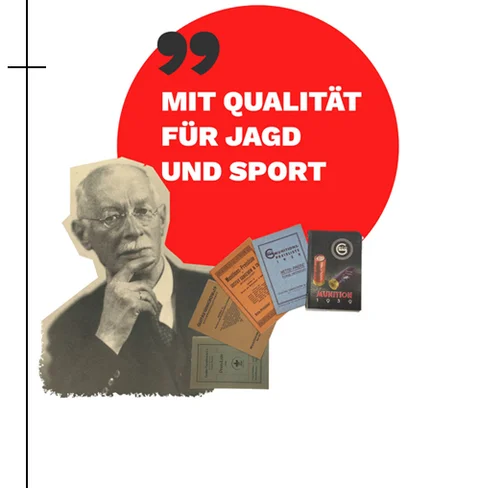
1927
A cooperation agreement was signed with Rheinisch-Westfälische Sprengstoff-Aktien-Gesellschaft, i.e. Dynamit-Aktiengesellschaft, in 1927 to strengthen the long-standing and amicable relationships between the companies. The world-famous ammunition and powder products from these factories then topped the list in the sales programme. The relationships helped to calm the market and reduce the cost price, ensuring steady and favourable rates for consumers in important areas. But the objective always remained the same, namely to offer “outstanding quality in the services of hunting and sport.” Our founding father Genschow would likely have been proud – and rightly so. Today, even 62 years after his death, his guiding principle remains firmly embedded in the brand’s DNA.
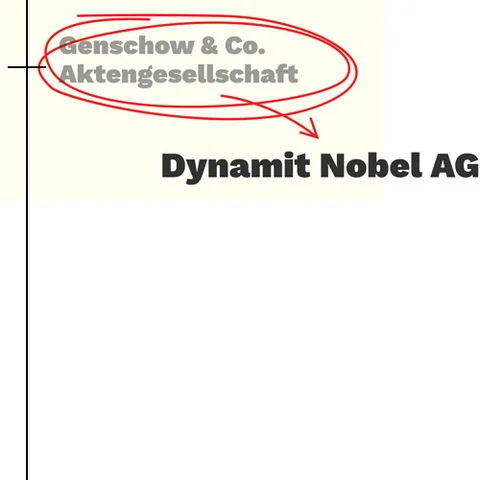
1963
All factory facilities owned by Genschow & Co. AG were transferred to Sprengstoff- und Munitionsfabrik Dynamit Nobel AG in 1963.
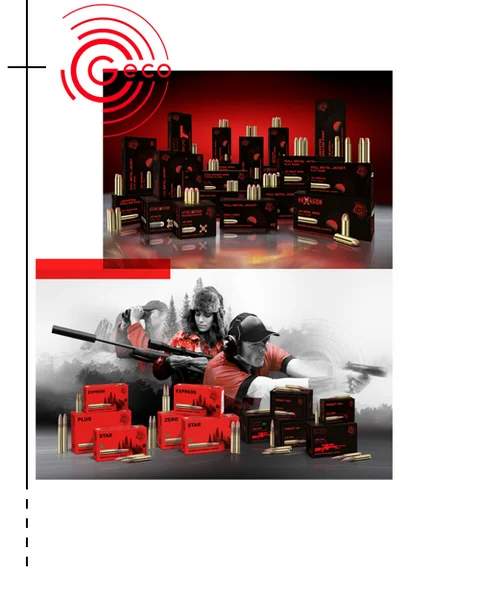
GECO today
In 2002, Dynamit Nobel AG became part of the Swiss technology group RUAG. The pyrotechnics division RUAG Ammotec was successfully managed under the umbrella of the parent company until 2022.
In July 2022, the Italian Beretta Holding Group acquired all shares in RUAG Ammotec, including the long-established GECO brand.
Since then, GECO has benefited from a strong international network, strategic expertise and synergies within the Beretta Group.
GECO Ammunition is now produced under the strictest quality controls at several European locations, including Germany, Switzerland, Sweden and Hungary. The brand offers a comprehensive portfolio of hunting and sporting ammunition in a wide range of calibres and bullet types. Each cartridge embodies over a century of experience, technical innovation and precision craftsmanship.
GECO is aimed specifically at price-conscious hunters and sport shooters who value reliable performance, fair prices and modern technologies – also ideal for those new to the world of hunting and sport shooting.
Current developments and product highlights (2024/2025):
GECO TARGET HP: The precise long-range ammunition for ambitious sport shooters has been expanded to include the calibres .223 Rem. and .300 Win. Mag. – for maximum accuracy, even at long ranges!
GECO UTHP: The Ultra Target Hollow Point 9 mm LUGER pistol ammunition for precision disciplines offers sport shooters controlled recoil, exceptionally good groupings and an optimised trajectory.
GECO STAR: The lead-free hunting ammunition is also available in the trendy 6.5 CREEDMOOR calibre. Ideal for demanding hunting situations with optimum penetration and precise deformation behaviour.
Commitment to shooting sports:
GECO is regularly represented at international competitions such as the GECO MASTERS, the IPSC Mini Rifle World Championship 2025 in the Czech Republic and the IPSC Rifle World Shoot 2024 in Finland – with top athletes, as a sponsor and with tried-and-tested ammunition for the highest demands.

